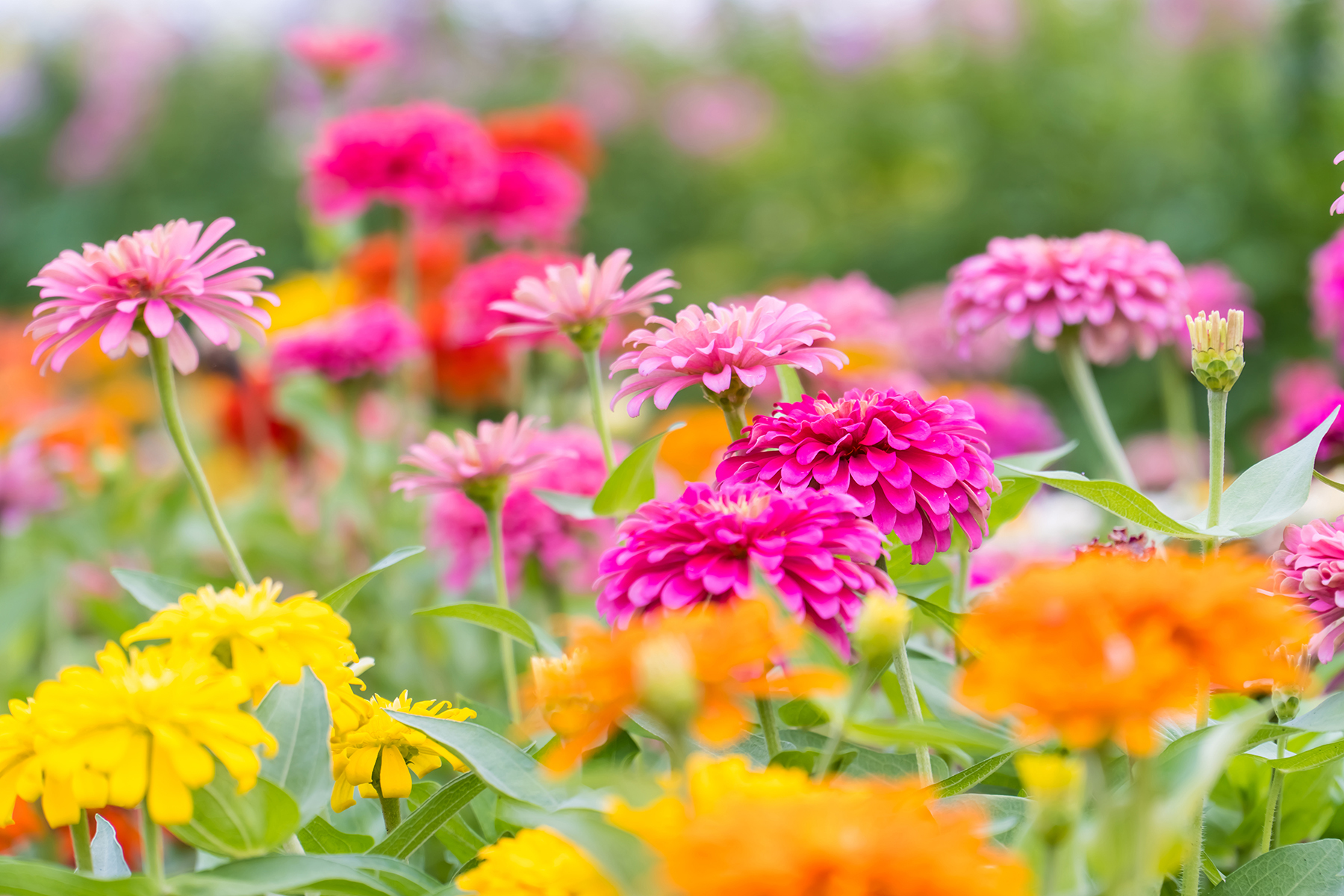Gardening Guru
The Summer Garden: A Showcase of Color, Creativity, and Care

Hello fellow gardeners! I hope you’re enjoying a lovely, plant-filled summer. Despite the challenges of heat, humidity, and pesky mosquitoes, let’s remain resilient and embrace the beauty that surrounds us.
As I stroll down my mostly shady front sidewalk, I’m captivated by nature’s gifts from my early spring work. Hostas are in full bloom, with plots of ‘Summer Music’ lining the path. Their green leaves lined in yellow with creamy white centers brighten the shade and seem to laugh as I walk by. Popped in around them are large blue pots, filled with hostas and ferns and other colorful annuals intermingled. Impatiens tend to be a controversial choice, as they have been plagued with downy mildew in recent years, resulting in death – but for the past couple of summers, I have avoided this disaster. I water in the cool of morning and don’t allow those in my garden to sit damp overnight. Planted in both containers and in the ground, I’m excited to share that my impatiens are thriving, adding vibrant color to my landscape.
Daylilies, typically sun perennials, are nestled under the shade in the border of an old, grand willow oak in my garden. Though they may not bloom as profusely as those in my sunny backyard gardens, they still offer a stunning summer show. Hydrangeas, with their early summer blooms, and azaleas provide a beautiful, textured backdrop all season long.
As I approach my porch from the sidewalk, caladiums seem to wave a friendly greeting. This year, I paired both ‘Frog in a Blender’ and ‘Pink Splash’ in pots, accented with a pop of impatiens and evergreen boxwoods. With the boxwoods serving as the staple pieces, I rotate annuals around them seasonally to keep the display fresh from spring into summer and autumn into winter.
I turn from this vantage point and spot another captivating combo, again in a large blue pot. Here, ‘Black Olive Heuchera,’ ‘Lemon Lime Nandina,’ and ‘Shrimps on the Barbie Pulmonaria’ mingle beautifully. For added interest this summer, I’ve added a finely-leaved (lacy, even – hence, its name) ‘Emerald Lace’ sweet potato vine to trail and add a splash of bright color.
Pots in summer tend to be pretty heavy feeders and require extra care. I fertilize mine every other week and ensure they receive adequate water, especially on hot, sunny days. Depending on the hours of direct sun your plants receive, some pots and hanging baskets may need attention a couple of times each day. Remember, when we plant, nurturing them is a responsibility we must take seriously. When we do our part, our plantings reward us with a show of beauty. There is nothing better than a thumbs up from passersby and neighbors when admiring our dedication to garden beauty!
Our annuals showcased in beds and borders, chosen for their nonstop color from planting through frost, also need our help to be all that they can be. Zinnias, marigolds, salvia, and even sweet peas and nasturtiums benefit from regular deadheading. Pick off spent blooms and trim leggy plants to keep them vibrant. With enough sun, water, and perhaps a little feeding, they’ll continue to bloom throughout the season.
Consider tossing the nasturtium blooms and leaves into your summer salad for a boost of vitamin C. Planted in your vegetable garden, they repel beetles, whiteflies, and aphids, making them an ideal companion plant. Pretty and beneficial, you gotta love ’em!
If you experience the unfortunate loss of a plant, don’t despair – compost! As long as it’s disease-free, a plant can begin its new life as compost. Grass cuttings, spent plants or plant parts, leaves, used coffee grounds, tea, and even your dryer lint can be recycled to your compost pile to begin its breakdown into pure gold for the garden. This year, I cut back on my oversized pile, making it much neater and sized to keep it turned and decomposing. Try it – pick a spot away from view, as composting isn’t exactly lovely to look at … but the useable results are.
Finished with recent spring cleaning and have a box of miscellaneous items you’ve not yet donated? Repurpose mismatched dishes and other kitchen/serving pieces into unique garden ornaments. Stacked and adhered with silicon, plates, vases, odd-shaped bowls, and wine bottles can become whimsical garden sculptures. I find that placing a wine bottle on the bottom provides stability, and placing it over rebar pounded into the perfect garden spot creates a lovely addition to the space. I’ve added one among a dancing sea of anemones in a back shade garden. So if you’re feeling a little crafty this summer, give this project a try … you can’t beat the price!
Stay on top of tidying, watering, feeding, and mulching, and don’t forget to feed the hummingbirds. These delightful visitors will flock to your garden when you fill a feeder vessel with your own homemade nectar of one part sugar mixed with four parts water. Make ahead and store in the fridge so you can change it out at least twice a week. Once discovered, they’ll bring their friends, providing you with daily hummingbird-feeding entertainment. After dinner, grab your favorite summer sip of something and go enjoy the fruits of your labors, and the hummingbird show!
Speaking of fruits of your labors, are you enjoying tomato sandwiches yet? If not, they’re just around the corner! I hope you planted new varieties to test this season. Veggies will soon be abundant, whether from your garden or local farmers market – so let’s eat fresh and local! I’ll be looking for you at the local Master Gardeners’ tent on Saturday mornings. Happy digging, friends!
Pam Eagles
Pam Eagles lives in Rolesville where she gardens with two dogs and a cat. She is a founding member of the Community Gardeners of Rolesville Garden Club and serves as a Wake County Master Gardener.

